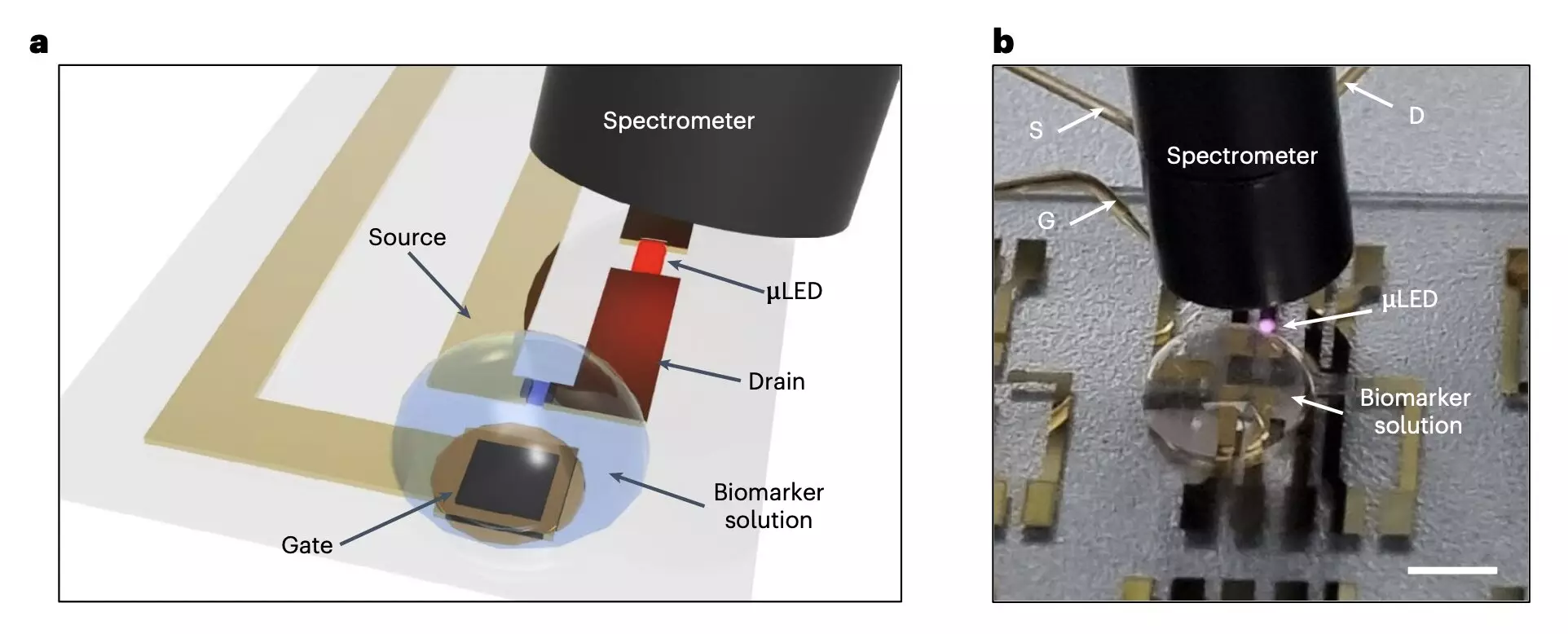In the modern world, the pursuit of health and wellness has led to significant advancements in medical technology. Among these innovations are wearable and implantable devices that monitor a broad spectrum of biological signals. These devices have become invaluable tools in both athletic training and healthcare, enabling users to keep track of several physiological metrics such as heart rate, sleep quality, physical activity levels, and more. The prospect of real-time monitoring opens unprecedented possibilities for preventive health care and enhanced athletic performance.
One of the exciting areas within this realm is the development of organic electrochemical transistors (OECTs), which leverage flexible organic materials to amplify biochemical signals. Traditional sensors are often bulky and rigid, limiting their integration into everyday wearables. In contrast, OECTs could pave the way for more subtle health monitoring capabilities by detecting various biomarkers related to metabolic processes. These may include glucose, lactate, cortisol, and even pH levels—critical indicators for numerous health conditions. Such precision in measurement could revolutionize disease management and real-time health monitoring.
However, even with their inherent advantages, the capabilities of OECTs come with their own set of challenges—particularly in how data is transmitted from the device to an external interface. While OECTs can effectively capture health-related data, the subsequent requirement for wireless communication introduces a level of complexity. The traditional communication circuits, which are predominantly constructed from rigid inorganic materials, can detract from the goal of creating entirely flexible, unobtrusive devices. The bulkiness and stiffness introduced by these materials can hinder user comfort and the overall design of wearable technologies.
Innovations from the Korea Institute of Science and Technology
Researchers from the Korea Institute of Science and Technology (KIST) have taken significant strides to overcome these challenges, recently introducing an innovative wireless device that can track essential biomarkers. Published in the journal Nature Electronics, this new design integrates both organic and inorganic materials, achieving an impressive thickness of just 4 micrometers. The leading authors, Kyung Yeun Kim and Joohyuk Kang, emphasized that their device’s ultrathin profile does not compromise on functionality and mechanical stability. By combining OECT sensors with near-infrared micro-light-emitting diodes (µLEDs), they demonstrated a powerful system capable of precise biomarker monitoring.
How the Device Works
The foundational architecture of their device utilizes OECT biochemical sensors paired with inorganic µLEDs, encapsulated within an ultrathin parylene substrate. The sensor array is fabricated using gold electrodes embedded in a polymer blend of ionomers, allowing for detailed interaction with biological markers. As biomarker concentrations fluctuate, the current through the OECT alters, consequently modulating the light emitted from the µLED. This real-time adjustment provides a dynamic feedback loop for continuous monitoring. In their experiments, the researchers showcased how the channel current shifted with varying biomarker concentrations, underscoring the device’s effectiveness.
Results and Future Directions
Initial evaluations of this pioneering device yielded promising outcomes, evidenced by a high transconductance rate of 15 mS and notable mechanical robustness. The team also explored additional applications, including using the device for near-infrared image analysis, expanding its potential for broader clinical and research applications. Looking ahead, there is considerable excitement about the future refinements of this technology. Researchers are contemplating the integration of flexible power sources like elastomeric batteries or solar cells, pushing toward a fully chipless and more sustainable health monitoring solution.
The fusion of organic and inorganic materials in wearable devices marks a critical turning point in biomedical engineering. As we continue to make strides in this field, we edge closer to creating seamless, unobtrusive health monitoring systems that could lead to greater personal autonomy in health management. With ongoing research and development, the prospects for future wearable technologies are not just hopeful—they are transformative, potentially altering the landscape of personal and clinical health monitoring forever.


Leave a Reply